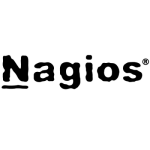What is most valuable?
SCOM is capable of so much that it can actually be somewhat overwhelming. But if you know how to use it effectively, one of the great things about it is that you can really tailor it to your specific environment and get as much (or as little) alerting as you need.
SCOM also provides for administrative roles and selective alerting, so if you have a team that only monitors a specific subset of servers or a specific application, you can create designated roles for them and give them limited console access for just those resources that they are responsible for.
How has it helped my organization?
In my previous position, there was basically no true infrastructure monitoring at all – they were relying on alerts configured per system or device, and consequently there was a lot of firefighting and working reactively to problems that occurred.
My first priority when I started was to implement enterprise monitoring and alerting, and SCOM was approved. Once it was in place and tweaked to that environment, we experienced a lot less firefighting and were able to prioritize issues as they came up. Less late nights, too.
What needs improvement?
In some ways, SCOM is a double-edged sword. It can do so much, even by default -- monitoring and alerting of everything from Windows servers and applications, to Linux machines, to network devices including routers and switches. However, because of this, you can get overwhelmed fairly quickly, and if left unchecked, you’ll get too many alerts for too many objects. When that happens, your team starts ignoring alerts because they simply can’t get to them all, and that is just as bad as not having any alerting at all.
For SCOM to be really great, I’d love to see Microsoft come up with a quick and simple way to enable common critical monitoring and alerts by default. Then, as you get more familiar with SCOM, you can gradually tweak and enable the more customized and intricate stuff.
For how long have I used the solution?
I have been using Operations Manager for almost three years. I set up and deployed it (with assistance from a consultant) at my last job, and it was already in limited use at my current position, where I currently administer it.
What was my experience with deployment of the solution?
SCOM can be somewhat tricky to implement.
What do I think about the stability of the solution?
There have been no issues with the stability.
What do I think about the scalability of the solution?
With SCOM 2012 R2, a single management pool deployment can handle up to 150,000 objects - according to Microsoft.
How are customer service and technical support?
Tech support and customer service depends on your relationship(s) with Microsoft, but Microsoft support, whether you like it or not, is pretty consistent across the board. If you've dealt with it previously, at least you know what to expect.
Which solution did I use previously and why did I switch?
I have used and evaluated other enterprise solutions. I will say that, while Microsoft sometimes does things that seem oddly questionable, SCOM truly makes sense once you get familiar with how it works. SCOM uses management packs, which are basically pre-packaged building blocks of rules and monitors, to allow configuration and tweaking of monitoring for each service or application
How was the initial setup?
SCOM can be somewhat tricky to implement, and if you’re implementing more than one System Center module, you definitely need to be careful about the order you deploy them in. However, there is good documentation online from Microsoft and other sources, so take your time and read the documentation completely to avoid having to start all over. I have worked in mainly small to mid-size environments, but scalability, from my understanding, is generally not an issue for SCOM.
What about the implementation team?
In both cases I was involved in, we had a consultant work with the internal team to deploy and configure SCOM. As I mentioned before, implementation can be tricky, and it’s mainly because there are a lot of smaller details to pay attention to (specific user & group creations, proper installation order, etc.). So I would advise bringing in a consultant to do initial deployment if you don’t have the experience in-house.
What's my experience with pricing, setup cost, and licensing?
I don’t know specifics about pricing and licensing, but if you’re familiar with Microsoft, you can get very good deals buying a certain level of licensing and getting System Center thrown in.
What other advice do I have?
SCOM is capable of providing full-featured infrastructure monitoring, alerting and reporting, especially for Windows-centric production environments.
I have heard a lot of people say that to do SCOM right, you really should create a full-time position, or at least a full-time System Center admin who works only on System Center stuff. Because you’re only going to get out of it what you put into it. If you don’t put any time into it, it’s not going to work well for you.
Disclosure: My company does not have a business relationship with this vendor other than being a customer.

















For any further infomation about this Microsoft product or assistance getting SCOM configured how you would like, contact me at Brenton@fbdigital.com.au or come to my website www.fbdigital.com.au